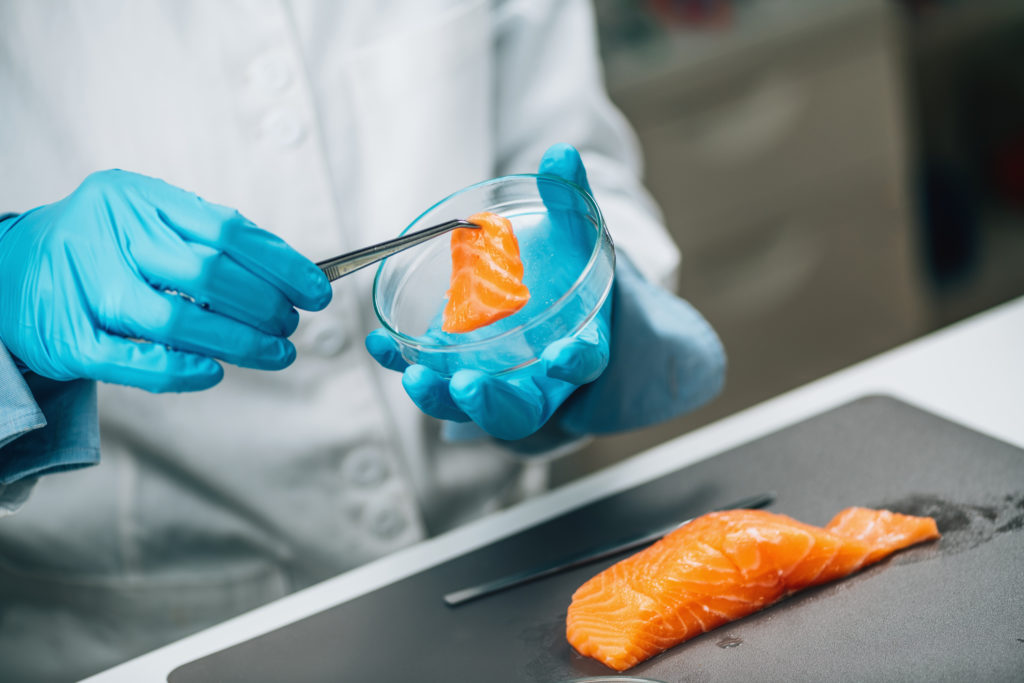We’ve heard of cell-based meat — meat produced by in vitro cell cultures of animal cells — but its seafood equivalent could be on the horizon. Cell-based fish has been making a splash in recent years, with several alt-seafood companies making the semi-finals of a recent alternative protein competition. So, will consumers be seeing cell-based fish on sushi menus any time soon?
What Is Cell-Based Fish?
The premise of cell-based fish is to divert human appetites for wild-caught seafood to ease pressure on global fisheries and replenish the oceans. However, a recent study published in the journal Fish and Fisheries found “the ability for cell-based seafood to achieve this conservation outcome is often oversimplified and will rely on an extensive, and we find somewhat tenuous, chain of events.” Yet, there are still reasons to remain optimistic about this technology.
To produce cell-based fish, muscle cells from a fish are extracted and propagated in ideal conditions inside a bioreactor. In order to give them structure and texture, the cells are grown on an edible scaffold designed to be indistinguishable from wild-caught fish. With the technology largely borrowed from cell-based meat production, it was not as much of a challenge to nail it down. The real challenge lies with consumers making the switch.
Overcoming the fickle consumer market will be tough for cell-based fish makers. With 70 to 80 percent of new food products rejected by consumers, foods that replace traditional meat face the additional hurdle of having to establish their likeness to the real thing. That’s a hard s(h)ell. The initial high cost of cell-based fish — which is expected to cost much more to produce than wild-caught fish — is also likely to discourage consumers from making the switch. For now, the focus remains on the technology and its potential.
Related: New Wave Foods Distributes Plant-Based Shrimp Amid Fishing Industry Controversy
Cell-Based Fish Players
Despite cell-based fish only recently gaining more mainstream attention, a handful of companies have already succeeded in developing various types of cell-based seafood, including carp, shrimp and salmon. However, even the most advanced companies are still in the pre-market stages of taste-testing and tweaking, but that hasn’t stopped them from louring in funds from venture capital firms.
Eight alt-seafood companies recently made the semi-finals of Feed the Next Billion, a $15 million competition by XPRIZE that aims to help feed the world’s growing population via alternative protein sources. Of the semi-finalists, two were cell-based aquaculture startups. US-based BlueNalu and Wildtype were among the 28 semi-finalist teams in the competition. Outside the competition, BlueNalu has raised nearly $85 million in funding from 24 investors, while Wildtype has accumulated around $16 million from seven investors.
“We have designed and executed a platform technology in which we will ultimately offer a broad array of sustainable cell-based seafood products to consumers, and our team has been extremely focused on implementing systems and processes that will be needed for cost-effective, large-scale production,” said Lou Cooperhouse, president and CEO of BlueNalu in a press release.
Benefits of Cell-Based Fish
If marketed strategically, there are several unique characteristics of cell-based fish that could make it appealing to some consumers, including:
- The reduced threat of mercury pollution
- The reduced threat of microplastics in fish
- Its potential to replace unsustainable forms of fish production, like land-based shrimp farms
While other methods exist to reduce overfishing, including fisheries management and marine protected areas, cell-based fish production could potentially be added to that list, depending on how quickly and effectively the technology evolves.












Join or login to leave a comment
JOIN LOGIN